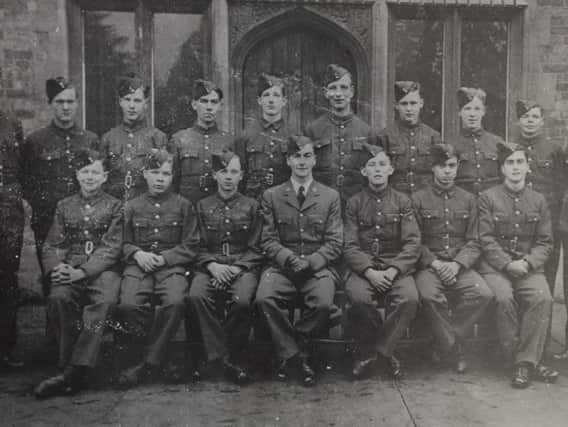Archives reveal the daring exploits of Rugby's early air cadets


Two former cadets’ tales of daring can be reported after Rugby’s squadron opened its archive to the Advertiser.
As the Luftwaffe terrorised Britain in early 1941 a young Rugbeian, Lewis P.J, joined the newly-formed 29F squadron.
Advertisement
Hide AdAdvertisement
Hide AdThe squadron’s HQ was on Castle Street, with drill taking place on Sunday mornings.


Cadets were taught morse code by the Royal Navy, which had a strong presence at the town’s technical college during the war.
The cadets flew from Church Lawford RAF Station, mainly in Airspeed Oxfords - twin-engined training aircraft developed in the 1930s.
Recalling his first flight, Lewis said: “The pupil was being instructed in stalls and recovery from them. Unknown to me, at the time, was the position of the stall warning klaxon – right by my left ear!
Advertisement
Hide AdAdvertisement
Hide Ad“We sat on the centre section of the wing, with our feet resting on the lower back structure of the pupil and instructor seats. Well that’s where we put our feet when the stall occurred and we headed for terra firma at a rate of knots. Incidentally, we had no seat belts! But we did have a parachute.”


Brian Cockvill joined the squadron around 1951.
He said: “In those days almost every cadet smoked and the hut was very unpleasant for someone like myself who didn’t smoke, as it reeked of tobacco.
“Sorry to say the squadron was running down from the wartime basis. We no longer had a band of all the instruments, only a side drum was left and sometimes we marched into town to the beat of this drum.
“The commanding officer was an ex-Lancaster pilot, F/O (Flight Officer) Farley had survived landing a Wellington bomber on the sea. F/O Capskick was an ex-wireless operator Warrant Officer Lambert had been a bomb-aimer.”
Advertisement
Hide AdAdvertisement
Hide AdRugby’s air cadets, now based on Edward Street, boast being one of the 50 founding squadrons of the organisation.
Who are the Air Cadets?
The first incarnation of the Air Cadets came about in 1938, when the Air Defence Cadet Corps (ADCC) was formed. Rugby’s 29F Squadron boasts being one of the 50 founding squadrons of the organisation - with 1F (Leicester) Squadron being the first.
The stated aim of the organisation was to produce a body of uniformed, disciplined and trained young men who would be of use to their country should war break out.
As Britain was thrust into the fight with Germany, the air cadets found themselves assisting the war effort. Helping with air raid precautions, filling sand bags and loading belts of ammunition were among the duties performed.
Advertisement
Hide AdAdvertisement
Hide AdMany cadets went on to join the Royal Air Force - by 1940 more than 1,800 cadets had joined the RAF and other wartime services.
In 1941, the ADCC was formally established as the Air Training Corps (ATC) by Royal Warrant. Today the ATC numbers 31,190 cadets and 10,280 adult volunteers.
Rugby’s ATC is asking former members to get in touch as it marks its 80th year.
Email [email protected] or call 01788 560953.